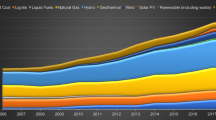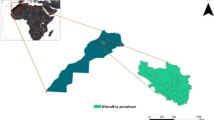Abstract
This paper presents two methodologies to evaluate and select Best Available Techniques (BAT): a methodology based on equal weighting of criteria and the Analytic Hierarchy Process (AHP). The aim of this work is the identification of the most sustainable BAT for the ceramic industry. To target these, 9 BAT options used in 13 alternative configurations of the ceramic tile manufacturing process have been considered and assessed on sustainability using relevant environmental, economic, technical and social indicators. After that, two multicriteria methodologies are applied. The first one combines screening techniques, according to economic feasibility, with graphical comparisons. The second one is the AHP method, which is based on the preferences of a decision maker to prioritize criteria and technological alternatives. This method is widely used in multicriteria decision problems because it is a structured tool that simplifies complex decisions. Applying both methodologies, the most sustainable scenario for the ceramic tiles industry combines heat recovery from flue gas with techniques to reduce noise or diffuse dust emissions and/or the flue gas depuration with CaCO3 and/or Ca(OH)2.
Access this chapter
Tax calculation will be finalised at checkout
Purchases are for personal use only
Similar content being viewed by others


References
Aczel J, Saaty TL (1983) Procedures for synthesizing ratio scale judgements. J Math Psychol 27:93–102
Afgan NH, Carvalho MG (2004) Sustainability assessment of hydrogen energy systems. Int J Hydrogen Energy 29:1327–1342
Afuah A (2000) How much do your “co-opetitors” capabilities matter in the face of technological change? Strategic Manage J 21:387–404
Azzone G, Manzini R (2008) Quick and dirty technology assessment: the case of an Italian research centre. Technol Forecast Soc Change 75:1324–1338
Bréchet T, Tulkens H (2009) Beyond BAT: selecting optimal combinations of available techniques, with an example from the limestone industry. J Environ Manage 90:1790–1801
Directive 1996/61/EC of the European Parliament and the Council, of 24 September, concerning integrated pollution prevention and control
Directive 2008/1/EC of the European Parliament and the Council, of 15 January, concerning integrated pollution prevention and control
Directive 2010/75/EU of the European Parliament and the Council, of 15 January, concerning Industrial Emissions
EC (2006) IPPC Reference document on economics and cross-media effects. European Commission, Institute for Prospective Technological Studies, Sevilla
EC (2007) IPCC Reference document on best available techniques in the ceramic manufacturing industry. European Commission, Institute for Prospective Technological Studies, Sevilla
Goedkoop M, Spriensma R (2000) The Ecoindicator’99: a damage oriented method for life cycle impact assessment: methodology report. Pré Consultants BV, Amersfoort
Gómez-López MD, Bayo J, García-Cascales MS, Angosto JM (2009) Decision support in disinfection technologies for treated wastewater reuse. J Clean Prod 17:1504–1511
Guzzo RA, Salas E (1995) Team effectiveness and decision making in organizations. Jossey-Bass, San Francisco
Ibáñez-Forés V, Bovea MD, Azapagic A (2013) Assessing the sustainability of best available techniques: methodology and application in the ceramic tiles industry. J Clean Prod 51:162–176
Liao Z, Cheung MT (2002) Internet-based e-banking and consumer attitudes: an empirical study. Inf Manage 39:283–295
Musango JK, Brent AC (2011) A conceptual framework for energy technology sustainability assessment. Energy Sustain Dev 15:84–91
Pilavachi PA, Roumpeas CP, Minett S, Afgan NH (2006) Multi-criteria evaluation for CHP system options. Energy Convers Manag 47:3519–3529
Pilavachi PA, Stephanidis SD, Pappas VA, Afgan NH (2009) Multi-criteria evaluation of hydrogen and natural gas fuelled power plant technologies. App Therm Eng 29:2228–2234
Saaty TL (1980) The analytic hierarchy process. McGraw-Hill, New York
Sadiq R, Khan FI, Veitch B (2005) Evaluating offshore technologies for produced water management using GreenPro-I: a risk-based life cycle analysis for green and clean process selection and design. Comput Chem Eng 29:1023–1039
Schoenberger H (2011) Lignite coke moving bed adsorber for cement plants e BAT or beyond BAT?. J Clean Prod 19:1057–1065
Schrage M (1995) No more teams!: mastering the dynamics of creative collaboration. Currency Doubleday, New York
Simapro v7.3.2 (2011) PRé Consultants, Amersfoort
Tran TA, Daim T (2008) A taxonomic review of methods and tools applied in technology assessment. Technol Forecast Soc Change 75:1396–1405
Wang JJ, Jing YY, Zhang CF, Shi GH, Zhang XT (2008) A fuzzy multi-criteria decision-making model for trigeneration system. Energy Policy 36:3823–3832
Acknowledgements
The authors gratefully acknowledge the funding from the Spanish Ministry of Science and Innovation (DPI2008–04926/DPI) and the Generalitat Valenciana (ACOMP/2011/036).
Author information
Authors and Affiliations
Corresponding author
Editor information
Editors and Affiliations
Rights and permissions
Copyright information
© 2015 Springer International Publishing Switzerland
About this paper
Cite this paper
Ibáñez-Forés, V., Aragonés-Beltrán, P., Bovea, M. (2015). Multicriteria Decision Making Methodologies Applied to the Selection of Best Available Techniques in the Ceramic Industry: Equalitarian vs Prioritised Weighting. In: Ayuso Muñoz, J., Yagüe Blanco, J., Capuz-Rizo, S. (eds) Project Management and Engineering. Lecture Notes in Management and Industrial Engineering. Springer, Cham. https://doi.org/10.1007/978-3-319-12754-5_9
Download citation
DOI: https://doi.org/10.1007/978-3-319-12754-5_9
Published:
Publisher Name: Springer, Cham
Print ISBN: 978-3-319-12753-8
Online ISBN: 978-3-319-12754-5
eBook Packages: EngineeringEngineering (R0)


